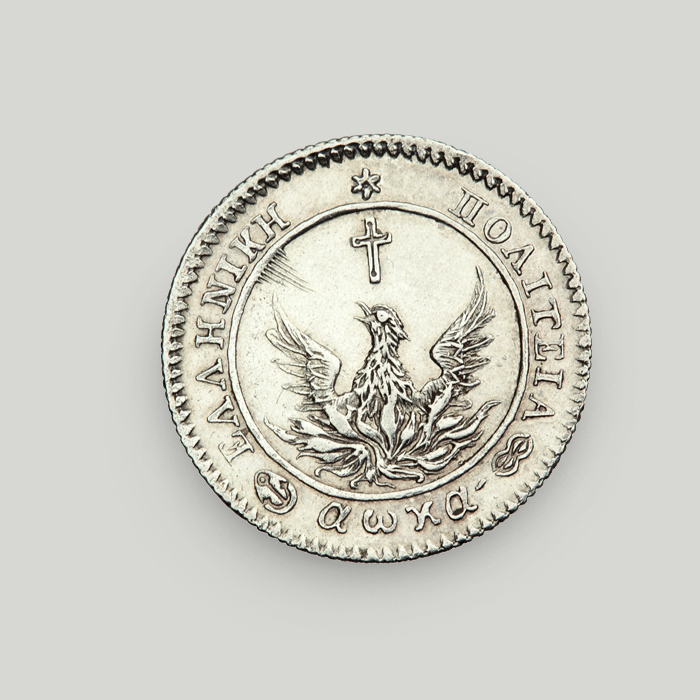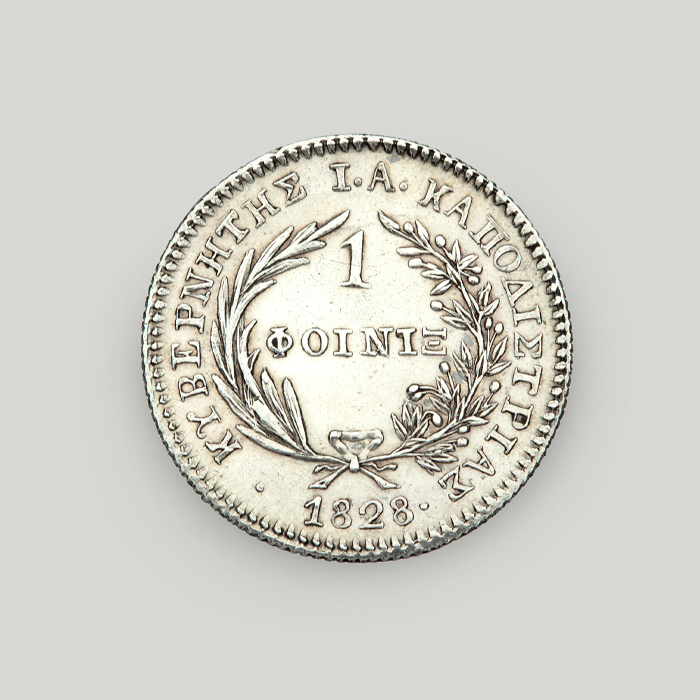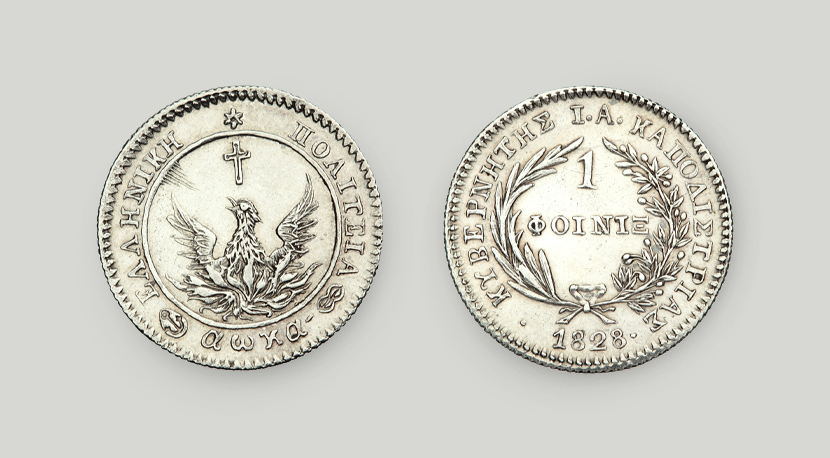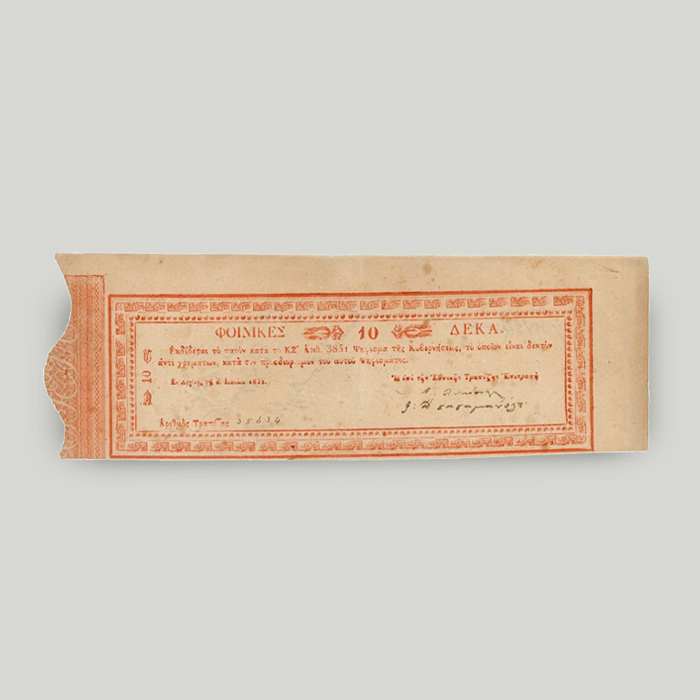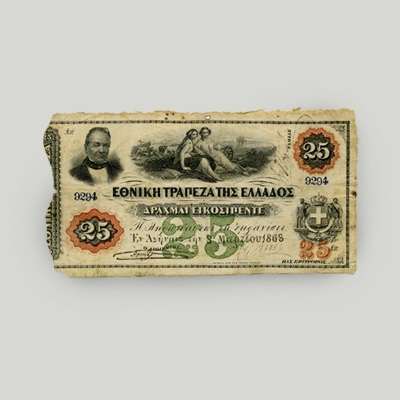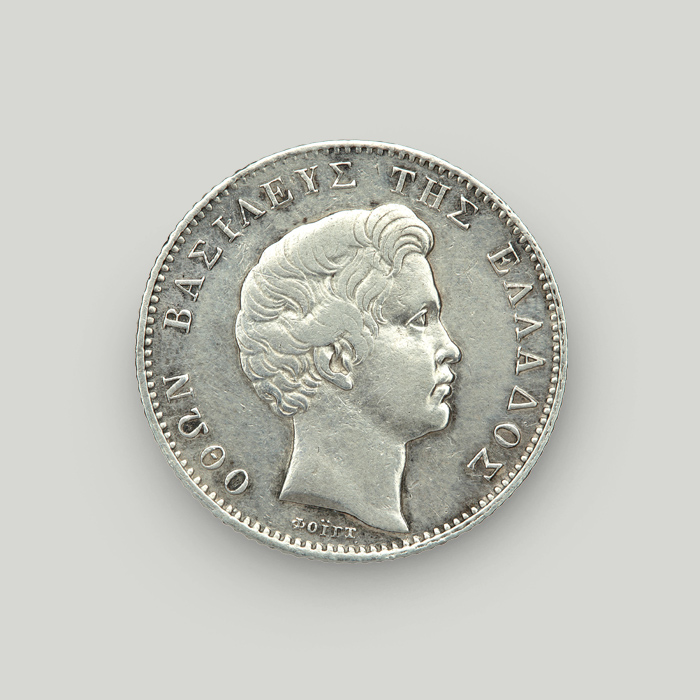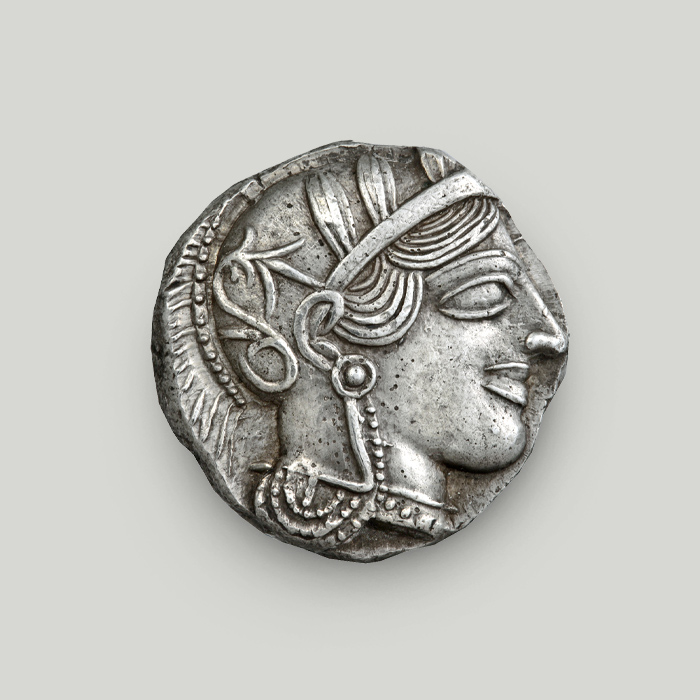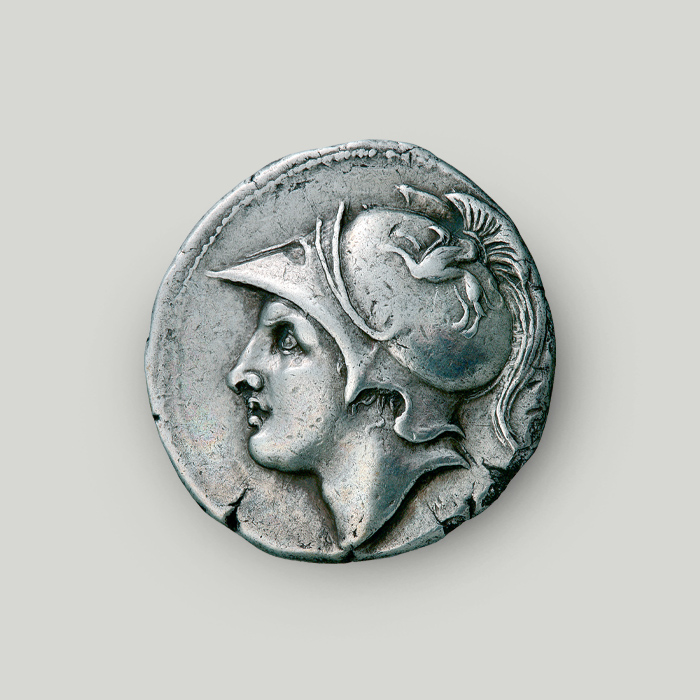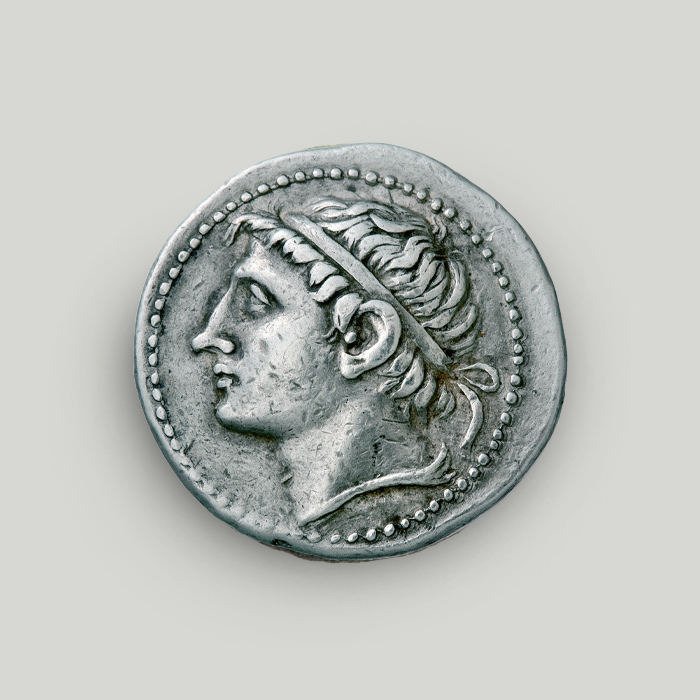Silver phoenix of Kapodistrias
The silver phoenix of Kapodistrias was the first coin of the newly-established Greek state. In 1827 Ioannis Kapodistrias was elected Governor of Greece. On 12 May 1829 he officially launched minting operations at the Aegina mint. Only a small number of silver phoenixes was minted due to a shortage of the precious metal. This means the coins are now extremely rare.
Obverse
The phoenix, the mythical bird, seated on flames. The rays at the top left symbolise the blessing of the Holy Spirit bestowed upon Greece as a nation reborn. Top centre: a cross. Within the border, the inscription reads ΕΛΛΗΝΙΚΗ ΠΟΛΙΤΕΙΑ / αωκα (respectively “GREEK STATE” and 1821 in Greek numbers, i.e. letters).
Reverse
The coin denomination enclosed in laurel wreath and olive branches. Around it, the legend reads ΚΥΒΕΡΝΗΤΗΣ Ι.Α. ΚΑΠΟΔΙΣΤΡΙΑΣ (GOVERNOR I.A. KAPODISTRIAS) and the year 1828.
The first Governor of the newly-established Greek state
Ioannis Kapodistrias was born on Corfu in 1776, when the island was still under Venetian rule. He studied medicine and philosophy in Padua, Italy.
In 1809 he started working for Emperor Alexander I of Russia. He enjoyed the respect of many European governments and was considered ideal by many to take the reins of the young Greek state.
During the 1827 National Assembly at Troezen, Ioannis Kapodistrias was elected Governor of Greece. When he found out about this, he left the Russian Emperor’s court. Right away, he visited many European capitals trying to secure financial support for the newly-established state.
He arrived at Nafplion in January 1828, but immediately moved to Aegina.
Kapodistrias would not live much longer. On 9 October 1831 he was assassinated on the steps of the church of Agios Spyridon in Nafplion.
The need for a new currency
The issue of a new currency was one of the young state’s many needs. To mint coins, however, both the suitable machinery and significant quantities of metal were required.
The latter issue was easily resolved, as the bronze canons readily available in large numbers could be melted into coins.
Following deliberation at the Panhellenion (the advisory body to the Governor, comparable to the present Council of State), it was decided in early April 1828 that the phoenix would be the new currency, with fractions called “lepta” (singular “lepton”).
In early May 1828 Alexandros Kontostavlos, a person working with Kapodistrias, travelled to Malta and Italy to seek the necessary machinery and equipment for the mint.
The machinery he found on Malta had belonged to the Order of Saint John in Rhodes. The lot was purchased for the sum of 100 British pounds. Other tools were bought in Marseilles in France, Ancona in Italy, and the Greek island of Syros.
Minting under Kapodistrias
On 12 May 1829 Kapodistrias officially launched minting operations at the same place where the first Ancient Greek coins had been minted: the island of Aegina.
The first copper coin of the newly-established Greek state was produced on 27 June. Even though the first coins were minted in 1829, the date on them is 1828.
Only a small number of silver phoenixes was produced at the Aegina mint due to a shortage of the precious metal. Therefore, these coins are now extremely rare.
In 1831 Kapodistrias decided to issue the first paper money, the paper phoenix. All banknotes of the series were also printed at the Aegina mint.
The fractions of the new currency
As per the decree of 28 September 1828, the silver phoenix was put in circulation as the official currency in the state. Its value was equal to 1/6 of the Spanish dollar, used widely in Greek territories at the time.
The phoenix was put in circulation along with the copper lepton (1/100 of the phoenix), whose higher denominations included 5- and 10-lepton coins. In 1830 the 20-lepton coin was also introduced.
The new currency as a marker of national identity
The newly-elected government aimed at replacing Ottoman paras in the market with the new copper lepton, i.e. 1/100 of a silver phoenix. To this end, the minting of these copper coins was prioritised.
Minting silver phoenixes was more a matter of national pride and independence than a means to resolve the country’s financial and monetary issues.
The iconic theme of the phoenix reborn
The type for this new coin was based on the Egyptian mythical bird of the same name. Myth has it that the solitary phoenix is endemic to the Eastern Desert and has a lifespan of 500-600 years. At the end of its lifetime, it dies in flames only to be reborn of its own ashes and start its long life afresh. Therefore, it is used to symbolise immortality.
The symbolism on the phoenix coin is that of Greece reborn after years of Ottoman rule.
The Alpha Bank Numismatic Collection is not open to the public.
Research visits to the Numismatic Collection can be organised upon request.
Contact us to book your visit.
